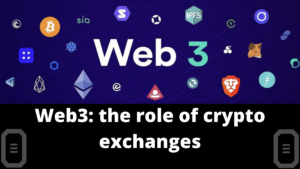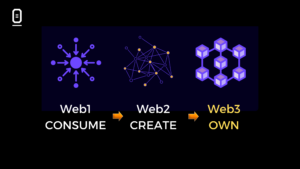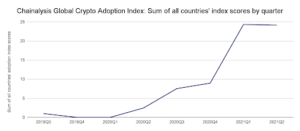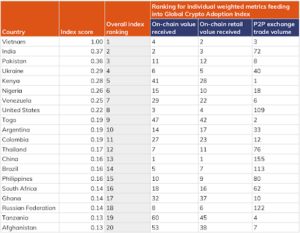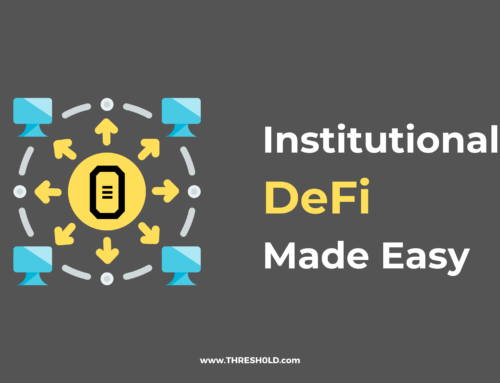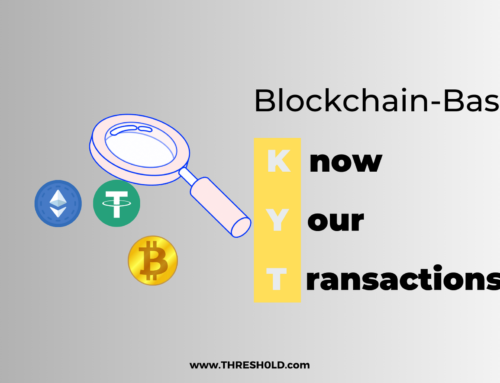There has been a lot of buzz around Web3 recently, especially within crypto-cycles. In this blog post, we will attempt to answer:
- How do Web1 and Web2 differ from Web3?
- What role do crypto exchanges play in the adoption of Web3?
Let’s get into it.
Web1 ➡️ Web2 ➡️ Web3
Our world is evolving faster than ever. The Internet is mainly responsible for most of the global socio-economic growth we have seen since the dot-com boom of the 1990s. The World Wide Web, or Web for short, has constantly evolved into faster, more innovative and interactive versions.
Web1 was static, and users could only read the content.
Web2 gave users the ability to read, create and interact with content. Examples are Facebook, Twitter, and Youtube. Web2 is driven by three core layers – cloud, mobile, and social.
With Web3, users can read, create, interact and own digital content. Web3 is called the semantic web, and it fuses blockchain with Artificial Intelligence (AI). Using Web3, humans, businesses, and machines will have the ability to exchange information, value and work with global counterparts they are not acquainted with without a middleman.
Although still in its infancy, web3 is already in use, and examples include:
- Conversational AI like Siri and Google Assistant
- Decentralised cloud storage platforms like BitTorrent & Filecoin
- NFTs and NFT market places like Opensea and Rarible
- Metaverse projects like Decentraland and The Sandbox
- Defi, Defi wallet and Defi Protocol like Curve, Metamask, and Uniswap
Web3 and Blockchain
Blockchain plays an indispensable role in web3 because it:
- fuels instant internet-native settlement
- Enables the creation of decentralised applications (dApps) and
- makes it almost impossible to counterfeit tokenized assets.
Web3, in its advanced form, will usher us into a worldwide web that is predominantly decentralised, permissionless, trustless and open. Cryptocurrency tokens will be used for payments, incentivisation and governance.
Through Defi, for example, persons who have been unable to gain access to a global financial market can now do so from a crypto wallet.
User privacy and data safety, which have been a concern in Web2, is addressed in Web3 by blockchain-powered web services like Dfinity, Helium and Arweave.
Blockchain-based use cases for a more improved web are so enormous that we can’t cover them here.
Crypto Exchanges as the link between web2 and web3
The Cryptocurrency market and its associated ecosystems are driving the vast interest that we now see in Web3. According to a Q3 2021 report by chainalysis, worldwide adoption grew by over 880%, with crypto exchanges driving usage in emerging markets.
In the fully-fledged Web3 era, regulated crypto exchanges would serve as de facto banks and brokerages companies. Persons wanting to participate in the Web3 world, whether by buying fungible and non-fungible tokens or having a metaverse experience, would have to convert their cash into the utility token acceptable within that ecosystem.
The table below shows how valuable crypto exchanges have driven crypto adoption in different countries.
A table showing: The 2021 Global Crypto Adoption Index Top 20
Source: Chainalysis
THRESH0LD’s Role
Given the importance of crypto exchanges in web3 and exponentially growing adoption rates, there is the need to have more efficient and scalable digital assets platforms; this is where THRESHOLD comes in.
As user adoption grows the demand for web3 products will increase. To meet these demands, digital asset businesses will need to find sustainable ways to:
- process mass transactions with little or no downtime
- keep user transaction fees low
- enhance security and
- continuously add new features
THRESH0LD offers you number 1 to 4 above and much more.
- We currently support 43 blockchain protocols and are steadily adding more
- Our DefiBrige enables access to all major Defi protocols and with the ability to swap thousands assets
Want to stay competitive and boost revenue?

